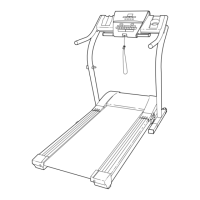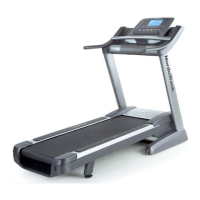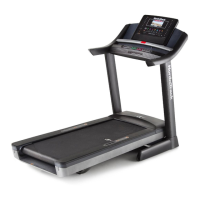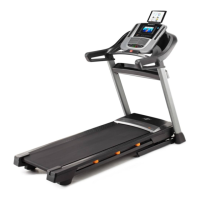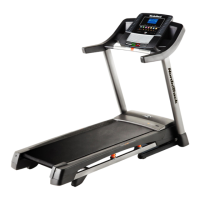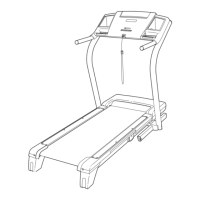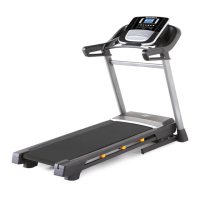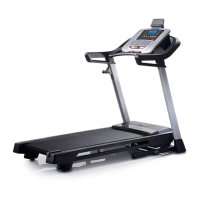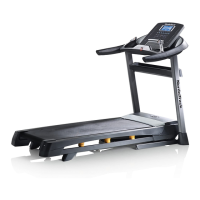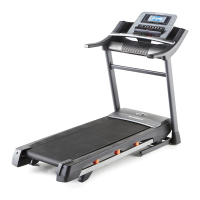CONDITIONING GUIDELINES
The following guidelines willhelp you to plan your ex-
ercise program. For more detailed exercise informa-
tion, obtain a reputable book or consult your physician.
EXERCISE INTENSITY
Whether your goal is to burn fat orto strengthen your
cardiovascular system, the key to achieving the
desired results is to exercise with the prober intensity.
The proper intensity level can be found by using your
heart rate as a guide. The chart below shows recom-
mended heart rates for fat burning and aerobic exercise.
HEART RATE TRAINING ZONES
AEROBIC 165 155 145 140 130 125 f15
MAX FAT 19URN 145 138 130 125 118 110 103
FAT BURN 125 120 1f5 110 105 95 90
Age 20 30 40 50 60 70 80
To find the proper heart rate for you, firstfind your age
near the bottom of the chart (ages are roundedoff to
the nearest tenyears). Next, find the three numbers
above yourage. The three numbersdefineyour "train-
ingzone." The lower two numbersare recommended
heart ratesfor fat burning;thehigher numberis the
recommendedheart rate for aerobic exercise.
To measure your heart rate during exercise, use the
pulse sensor on the console. If your heart rate is too
high or too low, adjust the speed and incline of the
treadmill.
Fat Burning
To burn fat effectively, you must exercise at a relatively
lowintensitylevel for a sustainedperiodoftime.
Duringthe firstfew minutesof exercise, your body
uses easily accessible carbohydrate calories for en-
ergy. Only after the first few minutes does your body
begin to use stored fat calories for energy. If your goal
is to burn fat, adjust the speed and incline of the tread-
mill until your heart rate is near the lowest number in
your training zone.
For maximum fat burning, adjust the speed and incline
of the treadmill until your heart rate is near the middle
number in your training zone.
Aerobic Exercise
If your goal isto strengthen your cardiovascularsys-
tem, your exercise must be "aerobic." Aerobic exercise
is activity that requires large amounts of oxygen for
prolonged periods of time. This increases the demand
on the heart to pump blood to the muscles, and on the
lungs to oxygenate the blood. For aerobic exercise,
adjust the speed and incline of the treadmill until your
heart rate is near the highest number in your training
zone.
WORKOUT GUIDELINES
Each workout should include the following three parts:
A Warm-up--Start each workoutwith 5 to 10 minutes
of stretching and light exercise. A proper warm-up in-
creases yourbodytemperature,heart rate and circula-
tion inpreparationfor exercise.
Training Zone Exercis_After warming up, increase
the intensityof yourexercise untilyour pulse is in your
trainingzone for 20 to 60 minutes.(Duringthe firstfew
weeks ofyourexercise program,do notkeep your
pulseinyour trainingzone for longer than 20 minutes.)
Breatheregularlyand deeply as you exercise--never
holdyourbreath.
A Cool-down--Finish each workout with 5 to 10 min-
utesofstretchingtocooldown. Thiswill increasethe
flexibilityofyourmusclesand will help prevent post-ex-
ercise problems.
EXERClSE FREQUENCY
To maintain or improve your condition, complete three
workouts each week, with at least one day of rest be-
tween workouts. After a few months, you may com-
plete up to five workouts each week if desired. The key
to success is to make exercise a regular and enjoyable
part of your everyday life.
25
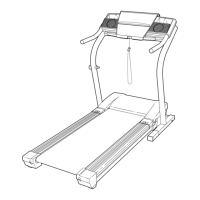
